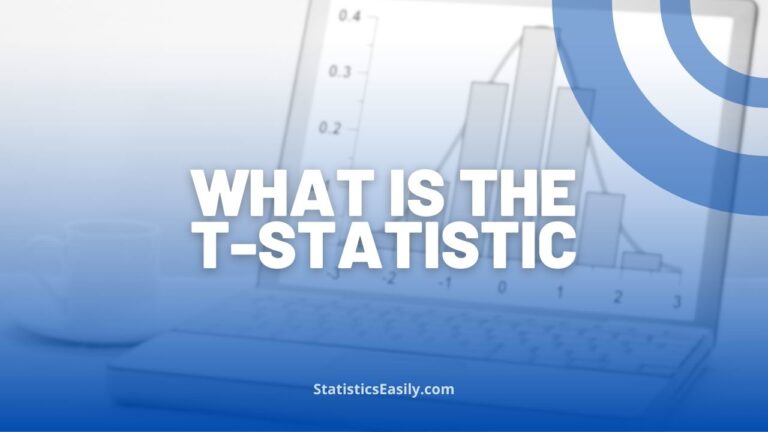Example of Paired t-Test
We provide an example of paired t-test, and you will learn the transformative power of paired t-tests in revealing hidden truths in paired data.
Introduction
The paired t-test is a cornerstone statistical method used to compare the means of two related groups. This test is precious in data science and statistical analysis for evaluating the impact of a specific intervention or treatment on a set of subjects. The paired t-test offers a methodical approach to ascertain the significance of changes observed in the data by comparing measurements taken from the same group at two different times.
Utilizing precise and systematic analysis, the paired t-test aids in uncovering the underlying truths in comparative studies, ensuring that observed differences are not due to random chance. This test is predicated on the assumption that the differences between paired observations are normally distributed, a fundamental concept in ensuring test results’ validity.
Highlights
- A paired t-test compares means from the same group at different times.
- This test is crucial for before-and-after studies in data analysis.
- Paired t-tests assume data differences are normally distributed.
- Effectively determines if interventions have significant effects.
- Enhances understanding of data relationships and changes over time.
Ad Title
Ad description. Lorem ipsum dolor sit amet, consectetur adipiscing elit.
Theoretical Background
The paired t-test is a fundamental statistical tool to assess the mean differences between two related samples. This test is particularly applicable when measurements are taken from the same subjects under two different conditions, such as before and after an intervention, making it invaluable in before-and-after studies.
Assumptions of the Paired t-test
The validity of the paired t-test rests on several critical assumptions:
- Paired Data: The data must consist of matched pairs representing a single entity’s measurements under two conditions.
- Normal Distribution of Differences: The differences between the paired measurements should follow a normal distribution.
- Independence of Observations: Each pair’s difference must be independent of the differences in other pairs.
These assumptions ensure the test’s reliability and accuracy, providing a robust framework for drawing meaningful conclusions from paired data.
Mathematical Elegance of the Paired T-Test Formula
The paired t-test formula embodies mathematical elegance, encapsulating complex statistical principles in a straightforward equation. The test statistic is calculated as:
t = d / (sd / √n)
where:
- d is the mean of the differences between paired observations,
- sd is the standard deviation of these differences, and
- n is the number of pairs.
This formula allows for the precise evaluation of whether the mean difference between paired observations is statistically significant, reflecting the beauty and precision inherent in statistical analysis. Through this calculation, the paired t-test provides a precise, quantifiable measure of the effect of an intervention or condition change, offering profound and actionable insights.
In applying the paired t-test to our dataset, where measurements were taken from subjects before and after treatment, we can quantitatively assess the treatment’s impact. By analyzing the mean difference of the paired measurements, the test unveils the treatment’s effectiveness, guiding informed decisions in various scientific and practical applications.
Step-by-Step Example of Paired t-Test
The dataset comprises two sets of measurements, ‘Before_Treatment’ and ‘After_Treatment’, for each of the 30 subjects. These paired observations are crucial for our analysis, allowing us to compare the same subjects’ scores before and after the intervention.
Dataset Download:
Step 1: Calculating the Differences
First, we calculate the difference between each subject’s ‘Before_Treatment’ and ‘After_Treatment’ scores. This step is foundational, as the paired t-test analyzes these differences to assess the treatment’s effect.
Step 2: Analyzing Descriptive Statistics
We examine the mean and standard deviation of the differences. The mean difference indicates the average effect of the treatment across all subjects. At the same time, the standard deviation provides insight into the variability of these differences.
Step 3: Conducting the Paired t-test
Using the formula ‘t = d / (sd / √n)’, where d is the mean difference, sd is the standard deviation of the differences, and n is the number of pairs, we calculate the t-statistic. This statistic helps us determine if the mean difference is significantly different from zero, indicating an effect of the treatment.
Visual Representation
To complement our analysis, we present the data visually using a graph that illustrates each subject’s before and after measurements, along with a line connecting each pair. This visual aids in understanding the treatment’s impact individually and across the group.
Interpreting the Results
The t-statistic, the degrees of freedom (df = n-1), and the p-value guide us in interpreting the test’s outcome. A p-value less than the alpha level (commonly set at 0.05) suggests that the treatment had a statistically significant effect on the subjects.
Running in R
In R, conducting a paired t-test is straightforward. It uses the ‘t.test()’ function, part of R’s base statistical package. This function allows you to specify two data vectors: one for the measurements before the treatment and one for the measurements after the treatment. Here’s how you can perform the analysis step by step:
# Load the necessary libraries
library(effsize) # For effect size calculation
library(readr) # For reading CSV files
# Load the necessary data from the CSV file
data <- read_csv("/path/to/paired_t_test_example.csv") # Update the path to where the CSV file is stored
# Extracting 'before' and 'after' treatment scores
before <- data$Before_Treatment
after <- data$After_Treatment
# Calculating the Differences for visualization and preliminary analysis
differences <- after - before
# Checking for Normality of the Differences
# Shapiro-Wilk test for normality
shapiro_test <- shapiro.test(differences)
print(shapiro_test)
# If the p-value of the Shapiro-Wilk test is > 0.05, the differences can be considered normally distributed.
# Conducting the Paired t-test
t_test_result <- t.test(after, before, paired=TRUE)
print(t_test_result)
# Calculating Effect Size - Cohen's d for paired samples
effect_size <- cohen.d(after, before, paired=TRUE)
print(effect_size)
This script outlines performing a paired t-test in R, from preparing the data to calculating the differences, conducting the test, and visualizing the results. The ‘t.test()’ function’s output will include the t-statistic, degrees of freedom, p-value, and confidence interval for the mean difference, providing all the necessary information to interpret the test results.
Interpreting Results
Interpreting results from a paired t-test is a critical step in understanding the impact of an intervention or treatment within a study. After running the paired t-test in R, as outlined in the previous section, we obtain several key pieces of output: the t-statistic, degrees of freedom (df), p-value, and the confidence interval for the mean difference.
Understanding the Output
- T-statistic: This value represents the calculated difference between the paired samples, measured in terms of standard error. A higher absolute value of the t-statistic indicates a larger difference between the paired groups.
- Degrees of Freedom (df): This value is calculated as the number of pairs minus one (n-1). It is used to determine the critical value of t from the t-distribution table, which is necessary for interpreting the p-value.
- P-value: Perhaps the most crucial output, the p-value, indicates the probability of observing the test results under the null hypothesis, which posits that there is no effect or no difference. A p-value less than the chosen significance level (typically 0.05) suggests that the observed differences are statistically significant, and we can reject the null hypothesis.
- Confidence Interval: This interval provides a range of values within which the true mean difference between the paired samples is likely to lie, with a certain confidence level (usually 95%).
- Effect Size: Beyond the p-value, the effect size is a vital measure that quantifies the magnitude of the difference between the paired groups. Unlike the p-value, which tells us whether the difference is statistically significant, the effect size tells us how significant that difference is in practical terms. Common effect size measures for a paired t-test include Cohen’s d, calculated as the mean difference divided by the standard deviation of the differences. A larger effect size indicates a more substantial impact of the intervention or treatment, providing valuable insight into its practical significance.
Making Informed Decisions
Interpreting these results involves more than just looking at the p-value. While a significant p-value indicates a statistically significant difference between the before and after measurements, the practical significance of this difference depends on the context of the study and the magnitude of the mean difference. For instance, even a small but significant difference can have profound implications in clinical studies.
Visual Representation
Visual aids, such as difference plots or before-and-after plots, can offer intuitive insights into the data, complementing the statistical analysis. These visuals can help highlight individual changes and overall trends, making the results more accessible and understandable.
Contextualizing the Results
Interpreting the results within the broader context of the study and the field is essential. Considerations include
- The assumptions of the paired t-test,
- The size of the effect, and
- The potential for real-world implications.
For example, in our dataset analysis, a significant result would suggest that the treatment has a measurable effect on the subjects. However, the practical importance of this effect should be evaluated in light of the study’s objectives, potential benefits, and any associated risks or costs.
In summary, interpreting the results of a paired t-test involves
- A careful examination of the statistical output,
- An understanding of the study’s context and
- An appreciation of the potential implications of the findings.
This approach ensures that the conclusions drawn from the data are statistically sound and meaningful in practice, guiding informed decisions in research and application.
Applications in Data Science
The paired t-test, a fundamental tool in statistical analysis, finds extensive application across various domains within data science, underscoring its versatility and critical relevance. This test’s ability to compare the means of two related groups before and after an intervention makes it indispensable in healthcare research and marketing analytics.
Healthcare and Clinical Research
In healthcare, the paired t-test is employed to evaluate the effectiveness of new treatments or drugs by comparing patient outcomes before and after the intervention. This not only aids in advancing medical treatments but also in making informed, ethical decisions regarding patient care, thereby upholding the principles of beneficence and non-maleficence in clinical practices.
Consumer Behavior Analysis
In marketing, data scientists utilize the paired t-test to assess the impact of advertising campaigns or changes in product features on consumer behavior. By analyzing customer satisfaction or purchase behavior before and after the marketing intervention, businesses can make data-driven decisions that enhance customer experience and drive sales.
Educational Research
Educational researchers apply the paired t-test to study the effectiveness of new teaching methods or educational technologies. By comparing student performance or engagement levels before and after implementing a new pedagogical approach, educators can discern the most beneficial strategies contributing to improving educational practices.
Environmental Studies
In environmental science, the paired t-test helps analyze the impact of conservation efforts or policy changes on environmental indicators such as air quality or water purity. This empowers policymakers and conservationists to make informed decisions safeguarding natural resources and promoting sustainability.
Ethical Considerations in Data Practices
Beyond its broad applications, the paired t-test embodies the ethical imperative in data science to seek truth and provide insights that contribute to the common good. The paired t-test facilitates ethical decision-making based on empirical evidence by enabling rigorous analysis of interventions across various fields.
The paired t-test bridges data and decision-making in every application, transforming numbers into narratives that guide ethical and practical actions. Its use in data science not only advances knowledge but also fosters a commitment to employing data for the betterment of society, reflecting the core values of integrity, accountability, and respect for evidence in research and analysis.
Ad Title
Ad description. Lorem ipsum dolor sit amet, consectetur adipiscing elit.
Conclusion
Throughout this exploration of the paired t-test, we’ve delved into its foundational theory, practical execution, and broad applications, revealing its indispensable role in data science and statistical analysis. This journey underscores the test’s capability to unveil the underlying truths in paired data, offering a window into the before-and-after effects of interventions across various domains.
The paired t-test stands out for its statistical rigor and philosophical alignment with the pursuit of truth in scientific inquiry. By enabling precise comparisons between related groups, it sheds light on changes’ subtle yet significant impacts, guiding ethical and informed decision-making. The test’s assumptions, methodology, and interpretation framework ensure that our conclusions are statistically significant but also meaningful and actionable.
In practical terms, the paired t-test empowers researchers to discern the effectiveness of interventions, from clinical treatments to educational methodologies, with clarity and confidence. Its application extends beyond mere number-crunching, influencing policies, practices, and perspectives in ways that resonate with the core values of integrity, accountability, and respect for evidence.
As we conclude, let this exploration serve as a call to action for professionals and researchers in diverse fields. Incorporate the paired t-test into your analytical toolkit, approach data critically, and strive to translate statistical insights into actions that reflect a commitment to improving lives and advancing knowledge. In doing so, we harness the power of data and contribute to a world where decisions are grounded in a deep understanding of the intricate tapestries of cause and effect.
Let the paired t-test be more than a statistical tool; let it guide us toward true insights and good actions. In your statistical endeavors, may you always find paths that lead to profound discoveries and ethical advancements, embodying the very essence of data science as a force for positive change in the world.
Recommended Articles
Explore deeper insights and expand your knowledge. Discover more articles on statistical techniques and data analysis on our blog.
- ANOVA and T-test: Understanding the Differences and When to Use Each
- What is the difference between t-test and Mann-Whitney test?
- Student’s T-Test: Don’t Ignore These Secrets
- Sample Size for t-Test: How to Calculate?
- Paired T-Test: A Comprehensive Guide
- APA Style T-Test Reporting Guide
Frequently Asked Questions (FAQs)
Q1: What is a paired t-test? It’s a statistical test that compares the means of two related groups to determine if there is a statistically significant difference.
Q2: When should you use a paired t-test? Use it when comparing measurements from the same group at two different times or under two different conditions.
Q3: What are the assumptions of a paired t-test? The differences between pairs are normally distributed, and data points are independent and paired.
Q4: How do you interpret the results of a paired t-test? A significant result indicates a likely difference in the means of the paired groups.
Q5: What is the difference between a paired and unpaired t-test? Paired t-tests are for related groups; unpaired t-tests are for comparing two independent groups.
Q6: Can a paired t-test be used for non-normal data? Generally, no. For non-normal data, consider non-parametric tests like the Wilcoxon signed-rank test.
Q7: How does sample size affect a paired t-test? Small sample sizes may not accurately reflect the population, affecting the test’s power.
Q8: What is the importance of effect size in a paired t-test? Effect size measures the magnitude of the difference, providing more context than p-values alone.
Q9: Can a paired t-test be used for over two-time points? No, it’s designed for two related samples. For more, consider repeated measures ANOVA.
Q10: How do outliers impact a paired t-test? Outliers can skew results, making it essential to assess data distribution before applying the test.








